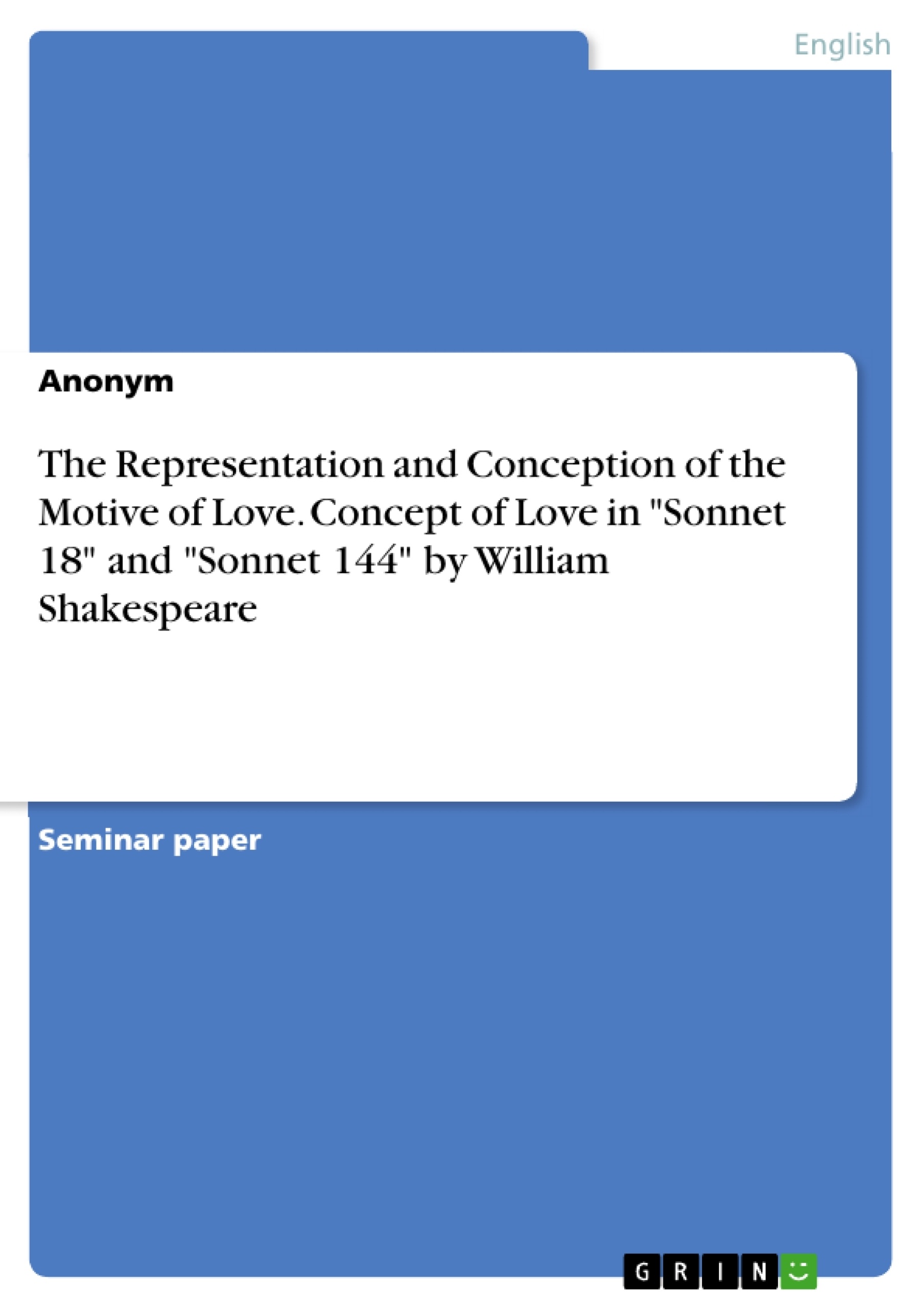The analysis explores the concept of love in Shakespeare's Sonnet 18 and Sonnet 144. It covers various aspects of love, including its representation, temporal and emotional dimensions, and the contrast between bodily and spiritual love. Sonnet 18 idealizes love and beauty, while Sonnet 144 portrays a more complex, morally ambiguous love. A comparison between the two sonnets highlights Shakespeare's nuanced understanding of love’s multifaceted nature.
Plato, an ancient Greek philosopher, has already been concerned with the understanding of love. According to this, he understood love in the sense that a human being basically consists of two people, who, however, were separated due to the anger of Zeus. Accordingly, his quote says that love is the phenomenon that drives us to seek and find our other half to become a whole, complete creature again. But not only Plato, but many other philosophers have spoken about love and its importance in life. According to this, Kant expresses only little about love and it can be interpreted that it represents an inclination which is neither morally nor rationally justifiable. Socrates, however, attested that love can lead to wisdom which is the ultimate goal of human existence.
Table of Contents
- 1. Classification of the Concept of Love
- 2. Notion of Love in Shakespeare's Sonnets
- 3. Concept of Love in Sonnet 18
- 3.1. Representation of Love and the Beloved One
- 3.2. Temporal and Emotional Dimension of Love
- 3.3. Bodily and Spiritual Love
- 4. Concept of Love in Sonnet 144
- 4.1. Representation of the Love and Characterization of the Lovers
- 4.2. Temporal and Emotional Dimension of Love
- 4.3. Bodily and Spiritual Love
- 5. Comparison of Sonnet 18 and Sonnet 144
Objectives and Key Themes
This work aims to explore the multifaceted concept of love as depicted in Shakespeare's sonnets, specifically Sonnets 18 and 144. It analyzes the representation of love, its temporal and emotional dimensions, and the portrayal of the beloved.
- The classification and philosophical understanding of love.
- Shakespeare's portrayal of love in his sonnets, differentiating between the "Fair Youth" and "Dark Lady" sequences.
- Analysis of the representation of love and the beloved in Sonnet 18.
- Examination of the temporal and emotional dimensions of love within the selected sonnets.
- A comparative analysis of Sonnet 18 and Sonnet 144.
Chapter Summaries
Chapter 1: Classification of the Concept of Love introduces the concept of love from various philosophical and psychological perspectives, highlighting the complexities and diverse interpretations of this fundamental human experience. It establishes a basis for the subsequent analysis of Shakespeare's work.
Chapter 2: Notion of Love in Shakespeare's Sonnets provides an overview of Shakespeare's sonnets, dividing them into the "Fair Youth" and "Dark Lady" sequences. It briefly describes the differing portrayals of love within each sequence, setting the stage for a closer examination of individual sonnets.
Chapter 3: Concept of Love in Sonnet 18 delves into a detailed analysis of Sonnet 18, exploring the representation of love and the beloved, the temporal and emotional dimensions of the poem's depiction of love, and the use of figurative language to convey the speaker's admiration.
Keywords
Love, Shakespeare, Sonnets, Sonnet 18, Sonnet 144, Idealized Love, Temporal Dimension, Emotional Dimension, Fair Youth, Dark Lady, Philosophical Perspectives, Psychological Perspectives, Literary Analysis.
- Quote paper
- Anonym (Author), 2023, The Representation and Conception of the Motive of Love. Concept of Love in "Sonnet 18" and "Sonnet 144" by William Shakespeare, Munich, GRIN Verlag, https://www.grin.com/document/1511794




